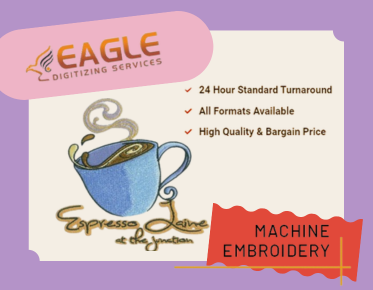How Embroidery Machine Speed Affects the Embroidery Results
Embroidery is an art that combines creativity with precision. The speed of an embroidery machine plays a crucial role in determining the quality of the final product. While it might seem that faster speeds would lead to quicker completion times, the reality is more nuanced. The speed at which an embroidery machine operates can significantly impact the quality, consistency, and durability of the embroidery.
The Relationship Between Speed and Quality
Embroidery machine speed is a critical factor that influences the quality of the embroidery. High-speed operations can lead to a variety of issues such as thread breakage, misalignment, and puckering of the fabric. These problems arise because the machine may not have enough time to accurately place each stitch, leading to inconsistencies in the design. Conversely, operating at a slower speed allows for greater precision, ensuring that each stitch is placed correctly and that the design is executed as intended.
Thread Tension and Breakage
One of the most common issues associated with high-speed embroidery is thread breakage. When a machine operates at high speeds, the tension on the thread increases, which can cause it to snap. This not only disrupts the embroidery process but also affects the overall appearance of the design. Adjusting the machine to a moderate speed can help maintain optimal thread tension, reducing the likelihood of breakage and ensuring a smoother embroidery process.
Fabric Handling and Puckering
Fabric puckering is another issue that can arise from high-speed embroidery. As the machine moves quickly, it can pull and distort the fabric, leading to puckering around the stitches. This not only affects the aesthetic appeal of the embroidery but can also compromise the integrity of the fabric. Slowing down the machine allows for better fabric handling, minimizing distortion and ensuring a flat, even finish.
Impact on Design Complexity
The complexity of the design also plays a role in determining the appropriate machine speed. Intricate designs with fine details require slower speeds to ensure accuracy and precision. At high speeds, the machine may struggle to execute complex patterns, leading to errors and inconsistencies. By reducing the speed, embroiderers can achieve a higher level of detail and maintain the integrity of the design.
Balancing Speed and Efficiency
While slower speeds can enhance quality, they also increase production time. For businesses, finding the right balance between speed and quality is essential. This is where professional embroidery digitizing services can be invaluable. Companies like Eagle Digitizing offer expertise in creating designs that are optimized for efficient sew-outs, minimizing the need for speed adjustments and ensuring high-quality results.
Choosing the Right Speed for Your Project
When deciding on the appropriate speed for an embroidery project, several factors should be considered. These include the type of fabric, the complexity of the design, and the desired quality of the final product. For instance, delicate fabrics and intricate designs benefit from slower speeds, while simpler designs on sturdy fabrics can be executed at higher speeds without compromising quality.
Utilizing Professional Services
For those who are new to embroidery or who are working on complex projects, utilizing professional embroidery digitizing services can be a wise choice. These services provide expert guidance and support, ensuring that designs are digitized for optimal performance on embroidery machines. Eagle Digitizing, for example, offers a range of services tailored to meet the needs of both small and large businesses, ensuring that every design is executed to perfection.
Future Trends in Embroidery Technology
As technology continues to advance, the embroidery industry is likely to see significant changes in machine capabilities and digitizing techniques. Innovations in machine design and software are expected to enhance speed control, allowing for more precise adjustments and improved quality. Additionally, the integration of artificial intelligence and machine learning could lead to smarter machines that automatically adjust speed based on the design and fabric, further optimizing the embroidery process.
In conclusion, while speed is an important factor in embroidery, it must be carefully managed to ensure the best results. By understanding the relationship between speed and quality, and by leveraging professional services, embroiderers can achieve stunning, high-quality designs that meet their specific needs. As the industry evolves, staying informed about new technologies and techniques will be key to maintaining a competitive edge in the world of embroidery.



.png)